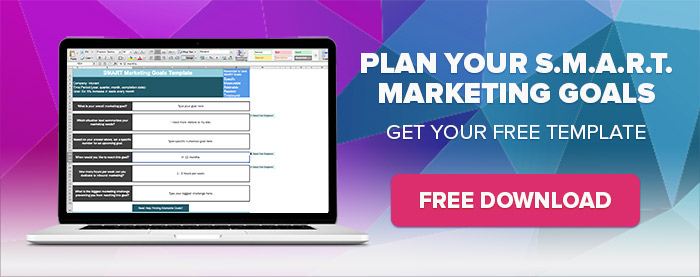![]()
It’s no secret that inbound marketing has spread like wildfire across B2C and B2B companies. For 2015, more than 5 times as many marketers report higher inbound marketing budgets than budget cuts, proof of inbound marketing successes in 2014. (source: https://library.hubspot.com/state-of-inbound-sales-2014-2015)
As a marketer, it’s imperative to be able to show the correlation between your efforts and the bottom line.
What’s one easy way to prove ROI? Use UTM tracking codes.
UTM tracking codes are snippets of code appended to a URL that enable you to track on a granular level how your content is performing. It’s not enough to show you get traffic from Facebook. You need to show specifically what link on Facebook contributed to an increase in traffic. UTM codes enable you to understand which content resonates, what CTAs work and how to best optimize your content for greater conversions.
Types of UTMs
There are five types of UTMs you can set up, whether you use HubSpot or Google Analytics.
Learn how to setup UTM Tracking in HubSpot
Learn how to use Google's URL Builder
Let’s pretend you are an emerging SaaS company selling a document management service running a “20% Off” promotion for all new subscriptions for summer. Your campaign includes PPC ads that drive traffic to a landing page. You also plan to promote the landing page via social media and email.
Your UTMs for this campaign could be as follows:
Campaign: A campaign tracking code is used to track several assets that point to one URL. Since this campaign takes place during the entire summer, let’s call the campaign, “Summer Sale.” Because Google is a little sensitive, use lower case when creating UTMs, or it will assume “Summer Sale” and “summer sale” are two different campaigns. Example: utm_campaign=summer_sale
Source: Source is what it sounds like. It tracks where your traffic is coming from. For your “summer sale” push, you are using PPC and social media including Facebook, LinkedIn and Twitter to drive traffic to your landing page. You need to create a UTM for each source. Example: utm_source=facebook
Medium: Attaching a medium UTM tracks what medium your traffic is coming from. Going along with the same example, all traffic coming from Facebook would be tagged utm_medium=social_media.
Content: Content tracking is where you can really drill down on what, specifically, within a piece of content is driving traffic. Content UTMs are used when you have the same link within an asset or campaign, such as a logo and a signature in an email. Your email should have tags everywhere you link to your landing page to help you know where leads are clicking. Example: utm_content=logolink and utm_content=signaturelink
Term: Term is used to identify a keyword in your PPC ads. For ads using the keyword “document managment software,” your UTM should be utm_term=document+management+software.
How to Improve Content from UTM Insight
Establish meaningful Key Performance Indicators (KPIs) and set up and monitor your UTMs accordingly. Your ultimate goal is to increase the amount of new customers, preferably at a lower cost per customer. Based on the performance of your content in various media, you can tweak your campaigns for greater success.
Looking at our example above, you may notice from the data that some of your PPC ads are doing well, while others are underperforming. In that case, you can focus your efforts on refining the better performing ads and either decreasing spend or allocating more dollars toward the more successful ads.
You also observe that Twitter is driving traffic, but not many conversions. LinkedIn and Facebook are performing well in driving quality traffic, and a strong percentage are converting to leads. With this knowledge, you can refine your Twitter messaging, or decrease it altogether.
If you notice quite a bit of traffic is generated from most of your sources, but there are few conversions, perhaps it’s time to edit the landing page content for conversion optimization.
Tying Marketing Dollars to Return on Investment
You can drive all the traffic in the world to your landing page, but if no one converts to a sale, it’s all vanity metrics. By using insights from your UTM tracking codes, you can make data-driven decisions on how to properly allocate resources to attract and convert the most leads. The result: Putting your dollars to work more efficiently.
You can also put a hard dollar amount to how much each Tweet, status update and PPC ad contributes to your revenue stream. When it comes down to budget allocation next year, you’ll be in a greater position to increase your resources.
Need to analyze your marketing spend? Make sure you have your S.M.A.R.T. Goals set first!


